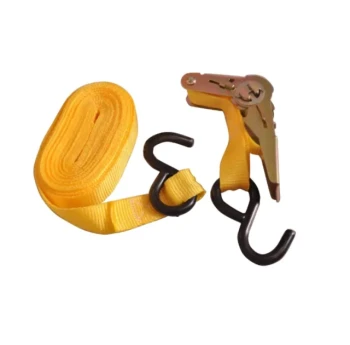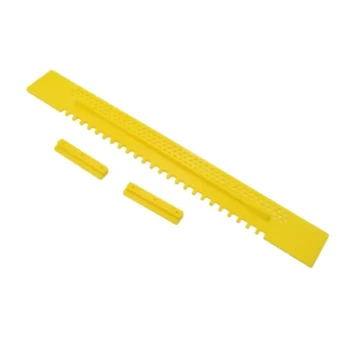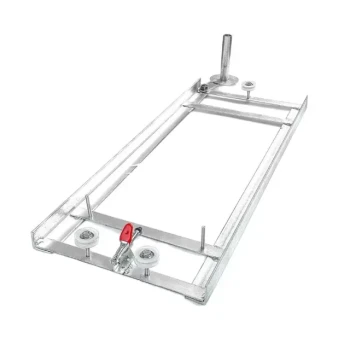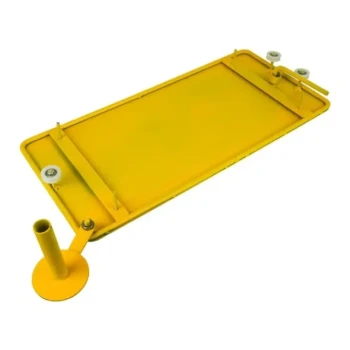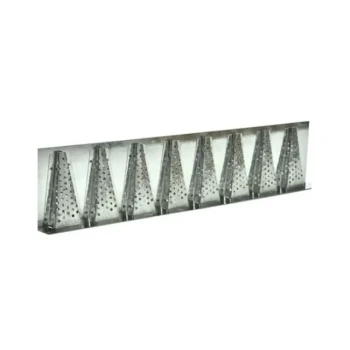To start a backyard beehive, you must first select a suitable location that provides warmth and protection. You then need to acquire a hive and its core components, source a healthy colony of bees, and understand the fundamentals of feeding and care to help them get established.
The success of your first beehive hinges less on complex techniques and more on executing three fundamentals correctly: choosing the right location, providing standard equipment, and ensuring your new colony is well-fed from the start.
Step 1: Selecting the Ideal Location
Where you place your hive is the most critical decision for the colony's health and your own convenience. It directly impacts their productivity and survival.
Prioritize Sun and Shelter
Bees are most active when they are warm. An ideal location receives direct morning sunlight, which encourages them to begin foraging earlier in the day.
Face the hive entrance to the south or southeast. This maximizes sun exposure and protects the colony from cold prevailing winds, especially in winter.
Ensure Access and Stability
Place the hive on a stand or blocks to keep it off the damp ground. This improves air circulation, protects the wood from rot, and makes it harder for pests like ants or mice to invade.
You also need easy access to the hive from the back or sides for inspections. This allows you to work without disturbing the bees' flight path at the front entrance.
Consider Proximity to Resources
Bees need a consistent water source within a quarter-mile, such as a birdbath (with stones for landing), a pond, or a dedicated bee waterer.
They also forage for pollen and nectar up to two miles away, so placing them near flowering plants, gardens, or natural landscapes is highly beneficial.
Step 2: Assembling Your Equipment
A modern beehive is a modular system. Understanding the function of each part is key to managing your colony effectively.
Understanding the Core Hive Components
A standard hive, like the common Langstroth model, is composed of several stacked boxes and parts.
- Hive Stand: Lifts the hive off the ground.
- Brood Chamber: The large bottom box where the queen lays her eggs and the colony raises young bees (brood).
- Honey Supers: Smaller boxes stacked on top of the brood chamber where bees store surplus honey.
- Queen Excluder: A screen placed between the brood box and honey supers to prevent the larger queen from laying eggs in the honey stores.
- Inner Cover & Lid: Provide insulation, ventilation, and protection from the elements.
Acquiring Essential Beekeeper Tools
Beyond the hive itself, you need a few tools for safe and effective inspections.
The most critical items are a beekeeper's suit or jacket with a veil for protection, gloves, a hive tool for prying apart boxes, and a smoker to calm the bees during inspections.
Step 3: Sourcing and Caring for Your Bees
With the location and equipment ready, the final step is to introduce your bees and provide initial care to help them thrive.
Choose a Source for Your Colony
Most beginners start with a "package" of bees or a "nuc" (nucleus colony). A nuc is often recommended as it includes a small, established colony with a laying queen, frames of brood, and food stores, giving you a head start.
Keep Young Bees Well-Fed
A new colony expends enormous energy building wax comb and raising brood. You must feed them a 1:1 sugar-water syrup continuously for the first several weeks until they have built out most of the comb in the brood chamber.
Common Pitfalls to Avoid
Starting a hive is straightforward, but new beekeepers often face a few common challenges. Awareness is the first step to prevention.
Underestimating the Time Commitment
Beekeeping is not a "set it and forget it" hobby. It requires weekly inspections during the peak season to monitor the queen, check for disease, and manage space.
Neglecting Pest Management
Pests and diseases, particularly the Varroa mite, are a significant threat to honeybee health. Learning to identify and manage these issues is a non-negotiable part of modern beekeeping.
Harvesting Honey Too Soon
The primary goal for a first-year hive is to build a strong, healthy population that can survive the winter. Any honey they produce is vital for their own food stores, so a first-year harvest is unlikely and should not be the priority.
Making the Right Choice for Your Goal
Your initial actions should align with your long-term beekeeping goals.
- If your primary focus is a successful setup: Prioritize selecting a sunny, sheltered, and accessible location before you even order your bees or equipment.
- If your primary focus is bee health: Commit to learning about feeding new colonies and basic pest identification right away.
- If your primary focus is a future honey harvest: Understand that year one is about colony strength, so focus entirely on supporting their growth, not on honey production.
Ultimately, successful beekeeping begins with providing a safe home and the resources your bees need to build a powerful and resilient colony.
Summary Table:
| Step | Key Action | Why It's Important |
|---|---|---|
| 1. Location | Choose a sunny, sheltered spot with easy access. | Maximizes bee activity, protects from weather, and simplifies hive inspections. |
| 2. Equipment | Acquire a standard hive (e.g., Langstroth) and protective gear. | Provides a safe, modular home for the colony and ensures your safety during management. |
| 3. Bee Care | Source bees (nuc recommended) and provide sugar-water syrup. | Gives the colony a strong start by supporting comb building and brood rearing. |
Ready to Start Your Beekeeping Journey with the Right Equipment?
HONESTBEE supplies beekeeping supplies and equipment to commercial apiaries and beekeeping equipment distributors through wholesale-focused operations. We understand that a successful hive starts with reliable, high-quality equipment.
Let us help you build a strong foundation for your apiary. Our range of products is designed to support the health and productivity of your colonies from day one.
Contact our wholesale team today to discuss your equipment needs and ensure your beekeeping operation is set up for success.
Related Products
- Professional Galvanized Hive Strap with Secure Locking Buckle for Beekeeping
- 5 Frame Wooden Nuc Box for Beekeeping
- Versatile Ratchet Hive Strap with S-Hooks for Secure Fastening
- Professional Reversible Beehive Hive Entrance
- Endless Loop Ratchet Hive Strap
People Also Ask
- Why are hive straps important for beekeepers? Secure Your Hives Against Wind, Predators & Transport
- What are Emlocks used for? Secure Your Hives During Transport and from Wildlife
- What are the two styles of hive straps? Choose the Right Strap for Your Hive Security
- What are the types of Emlocks available? Choose the Right Strap for Hive Security
- How do you loosen a ratchet strap? Master the 180-Degree Release for Easy Unloading


